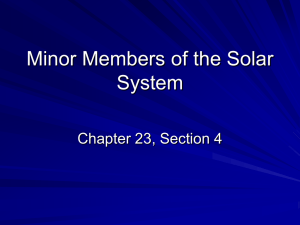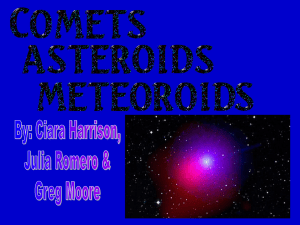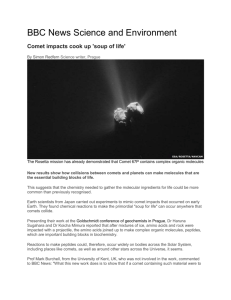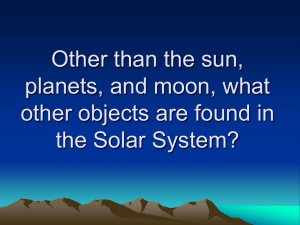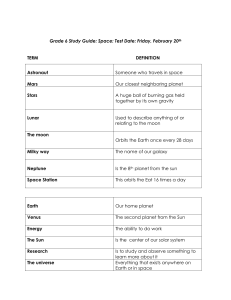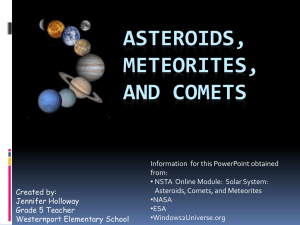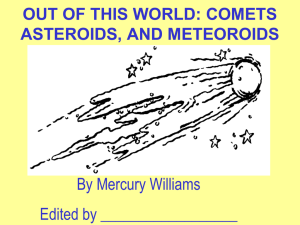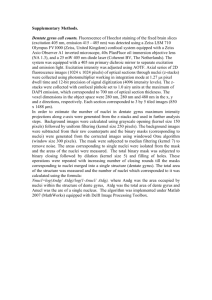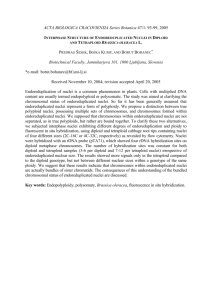PS700-poster-ex2
advertisement
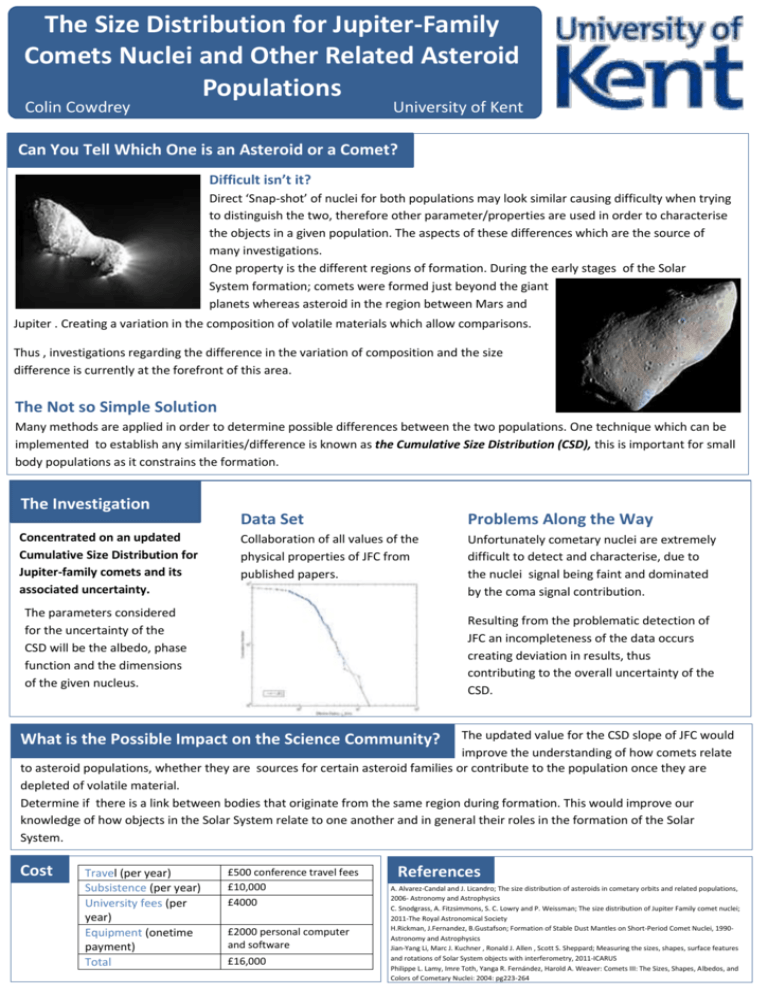
The Size Distribution for Jupiter-Family Comets Nuclei and Other Related Asteroid Populations Colin Cowdrey University of Kent Can You Tell Which One is an Asteroid or a Comet? Difficult isn’t it? Direct ‘Snap-shot’ of nuclei for both populations may look similar causing difficulty when trying to distinguish the two, therefore other parameter/properties are used in order to characterise the objects in a given population. The aspects of these differences which are the source of many investigations. One property is the different regions of formation. During the early stages of the Solar System formation; comets were formed just beyond the giant planets whereas asteroid in the region between Mars and Jupiter . Creating a variation in the composition of volatile materials which allow comparisons. Thus , investigations regarding the difference in the variation of composition and the size difference is currently at the forefront of this area. The Not so Simple Solution Many methods are applied in order to determine possible differences between the two populations. One technique which can be implemented to establish any similarities/difference is known as the Cumulative Size Distribution (CSD), this is important for small body populations as it constrains the formation. The Investigation Concentrated on an updated Cumulative Size Distribution for Jupiter-family comets and its associated uncertainty. Data Set Problems Along the Way Collaboration of all values of the physical properties of JFC from published papers. Unfortunately cometary nuclei are extremely difficult to detect and characterise, due to the nuclei signal being faint and dominated by the coma signal contribution. The parameters considered for the uncertainty of the CSD will be the albedo, phase function and the dimensions of the given nucleus. Resulting from the problematic detection of JFC an incompleteness of the data occurs creating deviation in results, thus contributing to the overall uncertainty of the CSD. The updated value for the CSD slope of JFC would improve the understanding of how comets relate to asteroid populations, whether they are sources for certain asteroid families or contribute to the population once they are depleted of volatile material. Determine if there is a link between bodies that originate from the same region during formation. This would improve our knowledge of how objects in the Solar System relate to one another and in general their roles in the formation of the Solar System. What is the Possible Impact on the Science Community? Cost Travel (per year) Subsistence (per year) University fees (per year) Equipment (onetime payment) Total £500 conference travel fees £10,000 £4000 £2000 personal computer and software £16,000 References A. Alvarez-Candal and J. Licandro; The size distribution of asteroids in cometary orbits and related populations, 2006- Astronomy and Astrophysics C. Snodgrass, A. Fitzsimmons, S. C. Lowry and P. Weissman; The size distribution of Jupiter Family comet nuclei; 2011-The Royal Astronomical Society H.Rickman, J.Fernandez, B.Gustafson; Formation of Stable Dust Mantles on Short-Period Comet Nuclei, 1990Astronomy and Astrophysics Jian-Yang Li, Marc J. Kuchner , Ronald J. Allen , Scott S. Sheppard; Measuring the sizes, shapes, surface features and rotations of Solar System objects with interferometry, 2011-ICARUS Philippe L. Lamy, Imre Toth, Yanga R. Fernández, Harold A. Weaver: Comets III: The Sizes, Shapes, Albedos, and Colors of Cometary Nuclei: 2004: pg223-264
